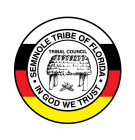Archaeometry
Archaeometry
The Archaeometry Section is tasked with bringing the cutting edge of digital and geographic technology and applying it to the overall mission of the THPO and facilitates the highest standards in both research and compliance. The Archaeometry Section applies modern scientific theories and methods to interpret data recovered by research completed by other THPO sections. Archaeometry has worked with the Tribe’s existing Geographic Information System (GIS) infrastructure to direct the integration of systematic tools and techniques throughout the THPO. The level of GIS work that is maintained throughout the THPO is of the highest quality and skill. The section also has interest in pursuing other technologies in the realm of spatial data, such as, photogrammetry, LIDAR scanning, drone mapping, and telling stories and histories with maps.
ar·chae·om·e·try | \ ˌär-kē-ˈä-mə-trē \ definition:
the application of scientific methods and technology to archaeological study
In Archaeometry, the main areas of research include database design, GIS data management, mobile GIS and geophysical techniques.
Database Design
With database design the goal is to determine if there are more efficient ways to improve search-functionality, streamline workflow and provide the most optimal way for staff to communicate data analysis. Over the past few years the THPO has transformed their record keeping from paper documents to single digital document files to relational database management systems (RDBMS).
Geographic Information Systems (GIS)
GIS data management of cultural and historical resources has rapidly matured over the past decade. Data users have become adept at working within a multi-user environment and leveraging the organizational structure of geodatabases for quality control, efficiency and efficacy. Archaeometry is looking to move GIS data into published web service of our data to Portal, so that data is more freely accessible to staff at the THPO and relevant data users that do not need high-end computers to access data and make maps while maintaining the appropriate permission structure.
Mobile GIS
The workflow of data stored within the geodatabases utilizes the continual development of Mobile GIS. This captures accurate and precise spatial data in the field in an organized manner that can be used to keep track of the cultural resources. The spatial data are captured on rugged smart tablets deployed in conjunction with Portal that allows THPO staff to directly edit feature services in an offline environment. This solution allows staff to quickly map fieldwork maps in Portal that are compatible with ESRI’s mobile apps.
GIS Web Services and Permitting
The THPO publishes GIS services for easy access in a secure web environment that allows for use by THPO staff, other STOF departments, and third parties without the need for dedicated local software and licenses. This permits leadership and other staff to make informed decisions during processes, such as, consultation in on off-reservation development projects that could negatively impact cultural resources significant to the Tribe. Archaeometry also is responsible for issuing on-reservation permits in accordance with the CRO and based on the recommendations of the THPO and Tribal Archaeologist.

Nick Butler and Gladiz Velez along with other STOF staff attending the Tribal GIS Conference in Albuquerque April 2024.
For more information, please contact the Archaeometry Staff:
Chief Data Analyst
Nick graduated from the University of Florida in 2015 with a Bachelors of Arts in Anthropology. He is currently pursuing his GIS Certification at the University of Florida. Nick began his career at the THPO in the fall of 2016 as a Field Technician as part of the Tribal Archaeology Section. In the summer of 2019, he transitioned to the Archaeometry Section in the THPO as the Geospatial Analyst, then later moved to his current position as the Chief Data Analyst in the fall of 2021.

Chief Data Analyst: Joseph Nicholas Butler
Geospatial Analyst
Gladiz received a B.A. in Ecosystem Science and Policy and a Minor in Geography and Sustainable Development from the University of Miami. She participated in research projects that leveraged GIS in various disciplines. She plans to pursue a graduate degree in geospatial data science. Gladiz has been with the THPO since 2023.

Geospatial Analyst: Gladiz Velez
Project Manager:



